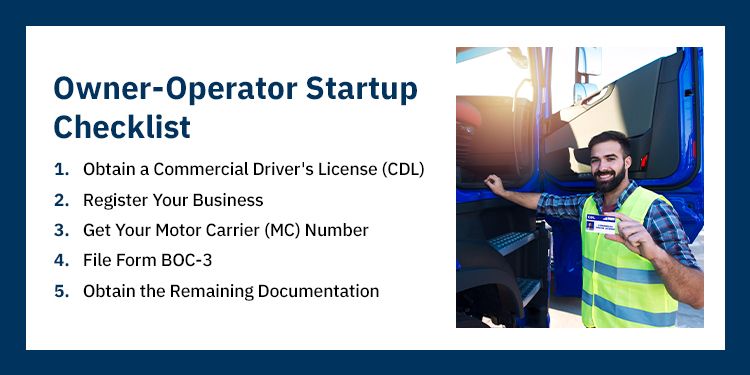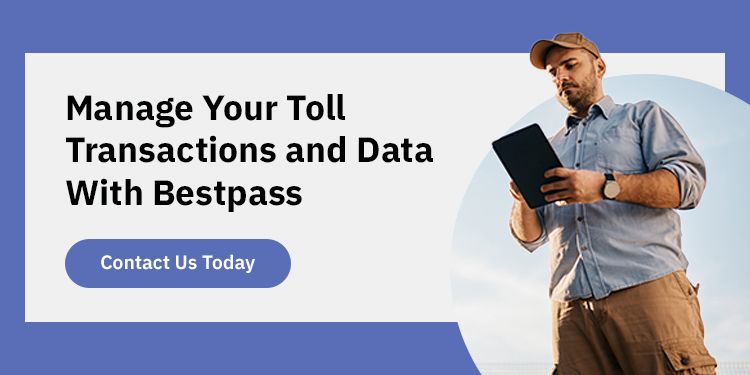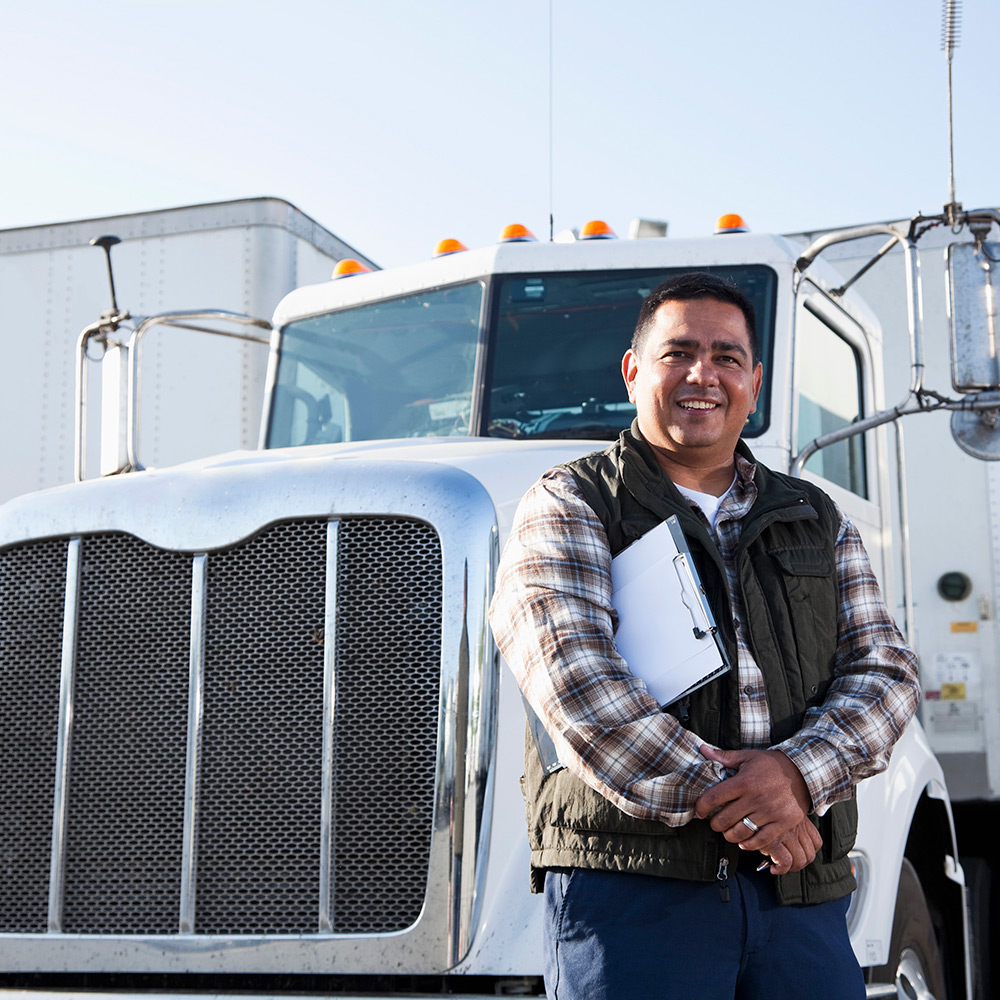
Owner-Operator Startup & Compliance Checklist
As a recently approved owner-operator, you probably have many responsibilities on your plate — purchasing vehicle insurance, coordinating workloads and schedules, collaborating with other fleets and meeting compliance standards, to name a few. On the other hand, maybe you're in the process of becoming an owner-operator and are gathering all the required documentation.
Whatever the case, ensuring you have all the required paperwork and follow all safety procedures can be overwhelming. Luckily, we've created this in-depth new owner-operator checklist to help you navigate these complex rules and regulations.

Owner-Operator Startup Checklist
To become a commercial vehicle owner-operator, you'll need to complete the following steps to open your business.
1. Obtain a Commercial Driver's License (CDL)
If you don't already have a CDL, you'll need one before opening and operating your business. A CDL permits you to operate large commercial vehicles. The truck's weight class will determine the type of license you'll need.
2. Register Your Business
You'll have to register your business with the IRS, the Department of Transportation (DOT) and the state. That includes complying with the Federal Motor Carrier Safety Administration (FMCSA) safety standards and completing a biannual update. You'll also need to register with the DOT. You'll incur fines if you don't complete these steps before accepting clients.
3. Get Your Motor Carrier (MC) Number
You will need an MC number and Trucking Authority from the FMSCA to operate as a legal owner-operator. An MC number is unique to your business, while a trucking authority legally allows you to drive commercial vehicles across state lines.
4. File Form BOC-3
Remember to file a BOC-3 form with FMSCA to prove you have a process agent in every state you operate in.
5. Obtain the Remaining Documentation
There are a few other licenses you'll need before operating your commercial trucking business, including:
- A USDOT number: The FMCSA uses this unique identifier to collect and monitor a business's safety information during audits, inspections and crash investigations.
- International fuel tax agreement (IFTA) license: You'll need an IFTA license if you operate in multiple states and transport taxable fuel.
- Heavy highway vehicle use tax (HVUT) certificate: Any vehicle with a gross weight exceeding 55,000 pounds that operates on public highways requires an HVUT certificate. The IRS enforces this annual tax. You can apply for this certificate online through the IRS.
Once you've successfully become an owner-operator, you'll need to prepare your business for periodic inspections. That's where the next checklist comes in handy.
Trucking Company Compliance Checklist
To ensure commercial vehicle owner-operators are complying with FMCSA regulations, the DOT performs periodic safety audits, often with little warning. There are four main types of DOT audits:
- New entrant audits: As a new motor carrier, you'll likely undergo a DOT safety audit within the first year of filing with the DOT and being issued a DOT number. These inspections are often called “new entrant safety audits.” They ensure you're upholding all safety guidelines as you get your operations off the ground.
- Hazardous materials audits: During a hazardous materials audit, the DOT reviews hazardous material labeling, training and shipping documentation.
- Security audits: A security audit examines your company's driver training, security measures and safety plan.
- Compliance review: Also called a targeted DOT audit, a compliance review typically occurs when a poor performance indicator is present. An indicator might be a high crash rate, citizen complaint or low SMS score. However, the FMSCA can also conduct random compliance reviews without cause.
DOT Requirements for Owner-Operators
DOT requirements are highly detailed and meticulous. Audits can also occur on incredibly short notice. Therefore, it's best practice to regularly run through a DOT compliance checklist and ensure you have all the necessary documentation. Here are some key areas the DOT will examine during an audit to cover in your compliance checklist.
1. Driver Qualifications and Licensing Requirements
All drivers on your team require up-to-date driver qualification files to ensure they all meet DOT regulations. Remember that you'll need to keep a DQF for three years, whether or not the driver still works for you.
Have these documents readily available for each driver in case of an audit:
- Proof of a current CDL with the required endorsements
- Proof of mandatory entry-level training
- Application for employment
- Copy of Medical Examiner's Certificate
- Proof of valid insurance
- Copy of pre-employment drug testing
- Six months of completed driver logs
2. Hours of Service (HOS)
The DOT limits how long drivers can operate a vehicle before taking a break. These exact service and break periods can vary slightly depending on the situation. Ensure your drivers follow HOS regulations and take their break times appropriately.
The FMSCA requires electronic logging devices (ELDs) to be installed in most commercial vehicles to track these hours. Remember to keep records that prove your drivers are operating within HOS restrictions. You'll also need to keep ELD data and backups for at least six months. You can view the HOS regulations in full on the FMCSA's website.
3. Vehicle Maintenance and Inspections
At the end of each workday, FMSCA requires owner-operators to inspect their vehicles to ensure everything operates correctly. Inspect and evaluate the following components after every use:
- Service and parking brakes
- Steering wheel
- Wheels and rims
- Horn
- Reflectors
- Windshield wipers
- Emergency equipment
- Coupling devices
- Rearview mirrors
You’ll need to document and submit a report of any defect you find. If an issue puts the operator’s safety at risk, make sure the defect is resolved before dispatching the vehicle again.
During DOT audits, you’ll need to provide the following documentation for all operating commercial motor vehicles in your fleet:
- Yearly inspection records dating back at least 14 months
- Post-trip inspection records including noted defects going back at least 90 days
- Pre- and post-trip Driver Vehicle Inspection Records (DVIRs)
4. Hazardous Materials Compliance Requirements
If you transport materials classified as hazardous — such as bleaches, ammunition, lithium batteries and aerosol sprays — you'll need to present proof of compliance during DOT audits.
Hazmat audits are one of the most complex, detail-oriented types, so be sure to read the FMCSA's compliance requirements carefully to ensure you're safely transporting these substances.
5. Drug and Alcohol Testing
During a DOT audit, you'll need to show proof of compliance with FMSCA's drug and alcohol screening requirements, including:
- Documentation of your company's drug testing policies and programs.
- Reports outlining all testing performed in the last calendar year, including pre-employment, reasonable suspicion, random and follow-up testing.
- Proof of reasonable suspicion training.
Manage Your Toll Transactions and Data With Bestpass
As a new or aspiring owner-operator, you have another important factor to consider — finding the best way to organize your toll payments and records. At Bestpass, we provide a comprehensive toll management platform to keep your operations as hassle-free as possible.
With many tasks and responsibilities to juggle each day, you'll want an efficient platform that saves time and money. Bestpass is ready to deliver. Learn more about our toll management solutions by contacting us today.


